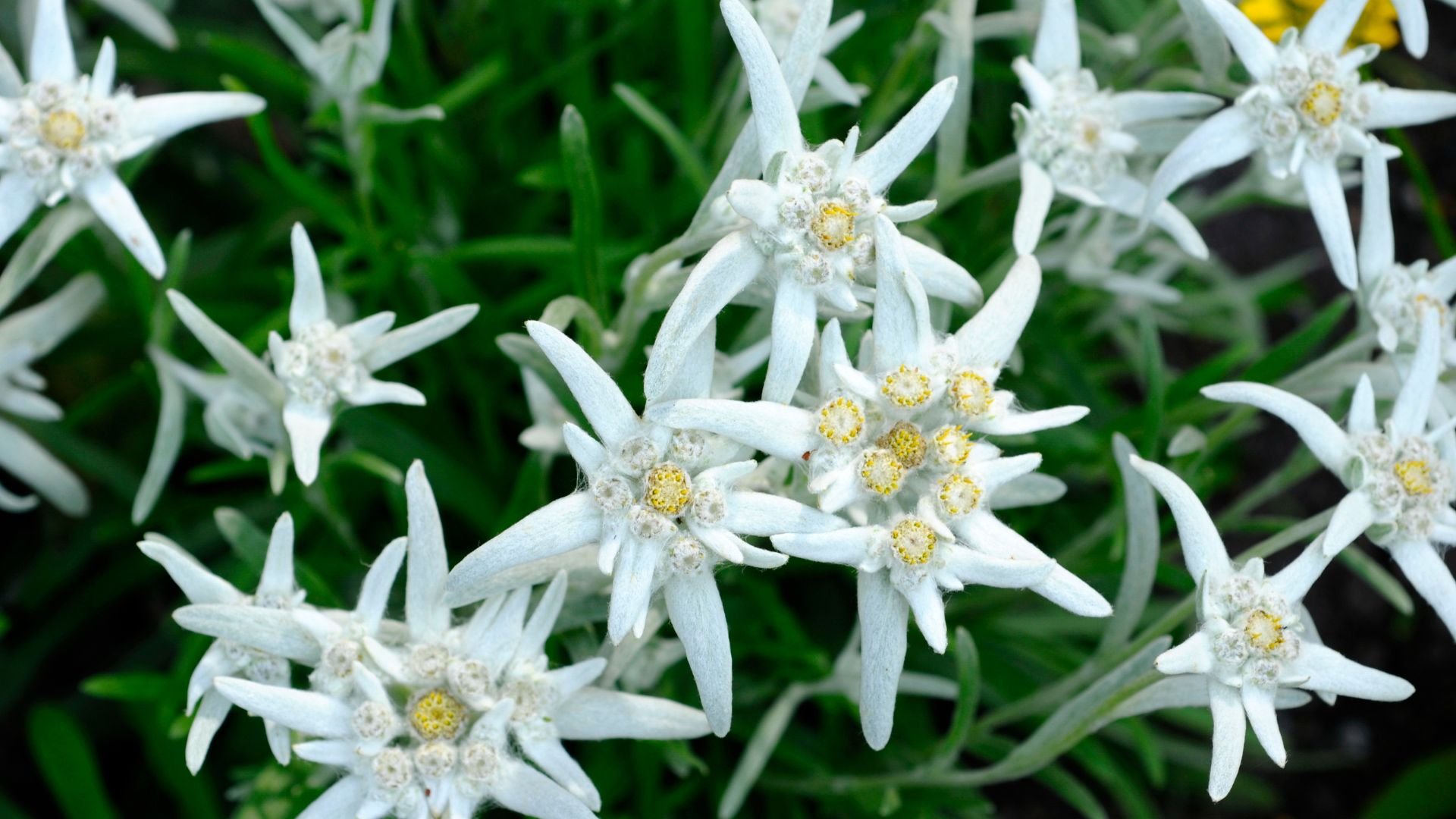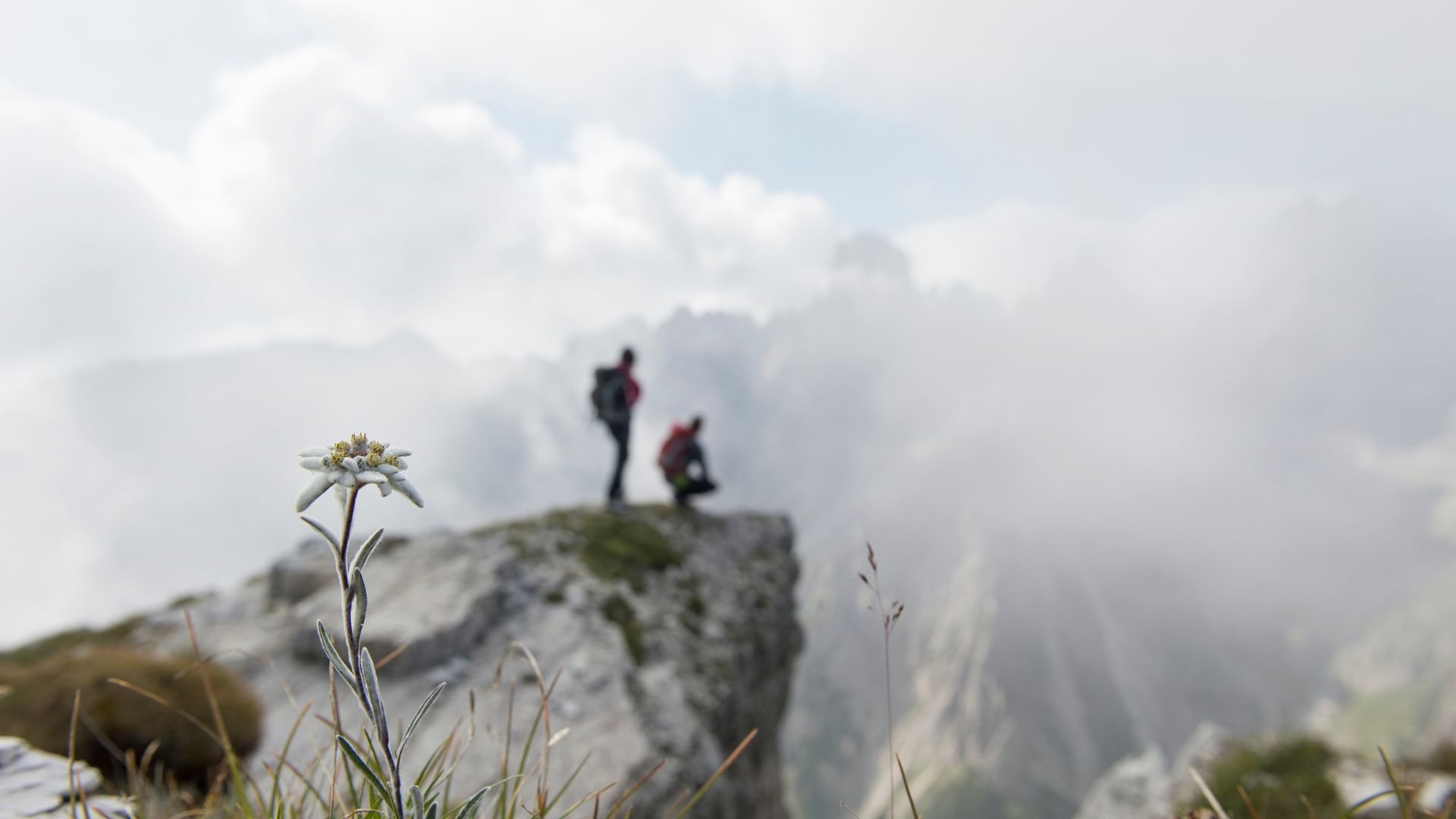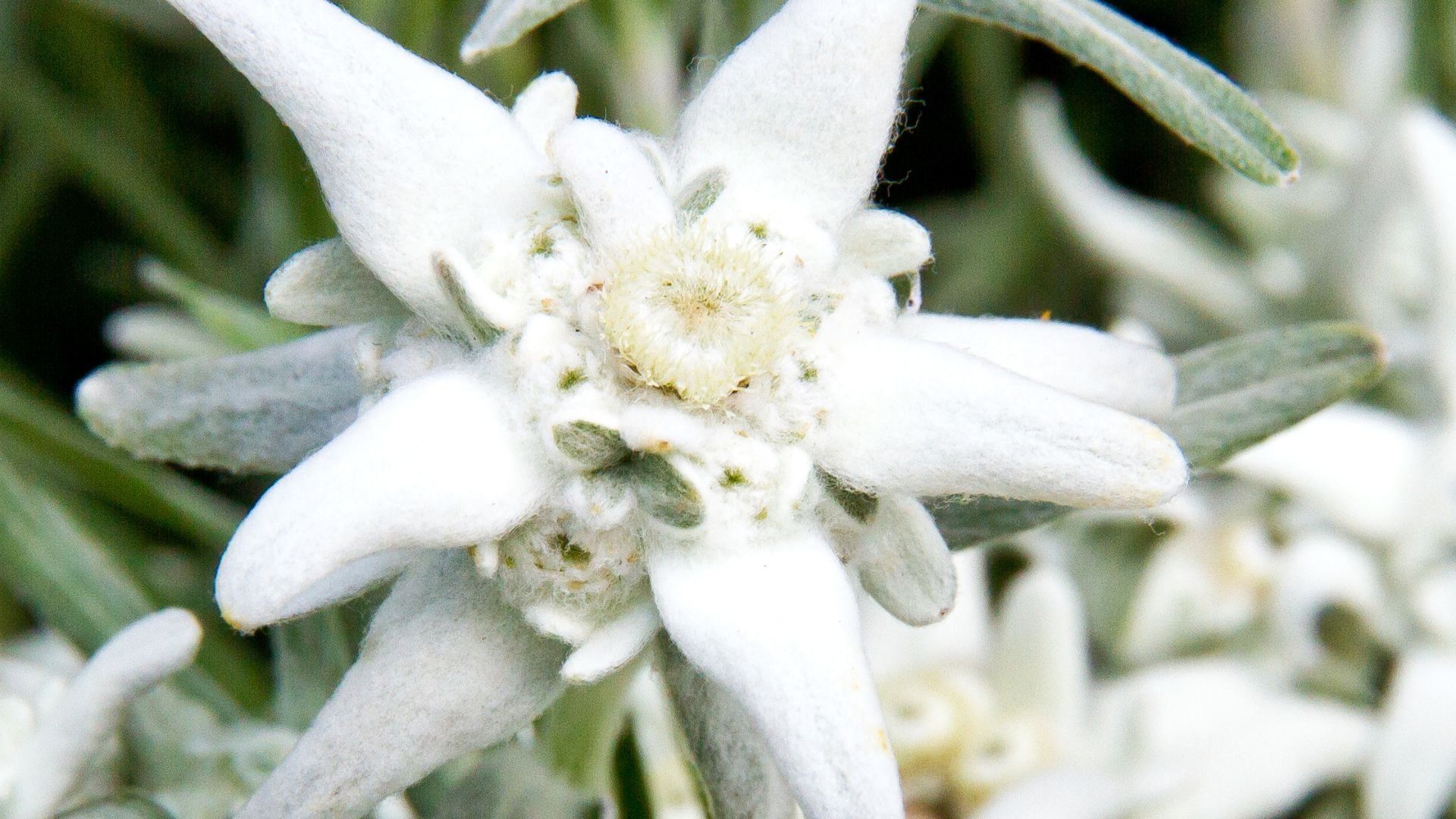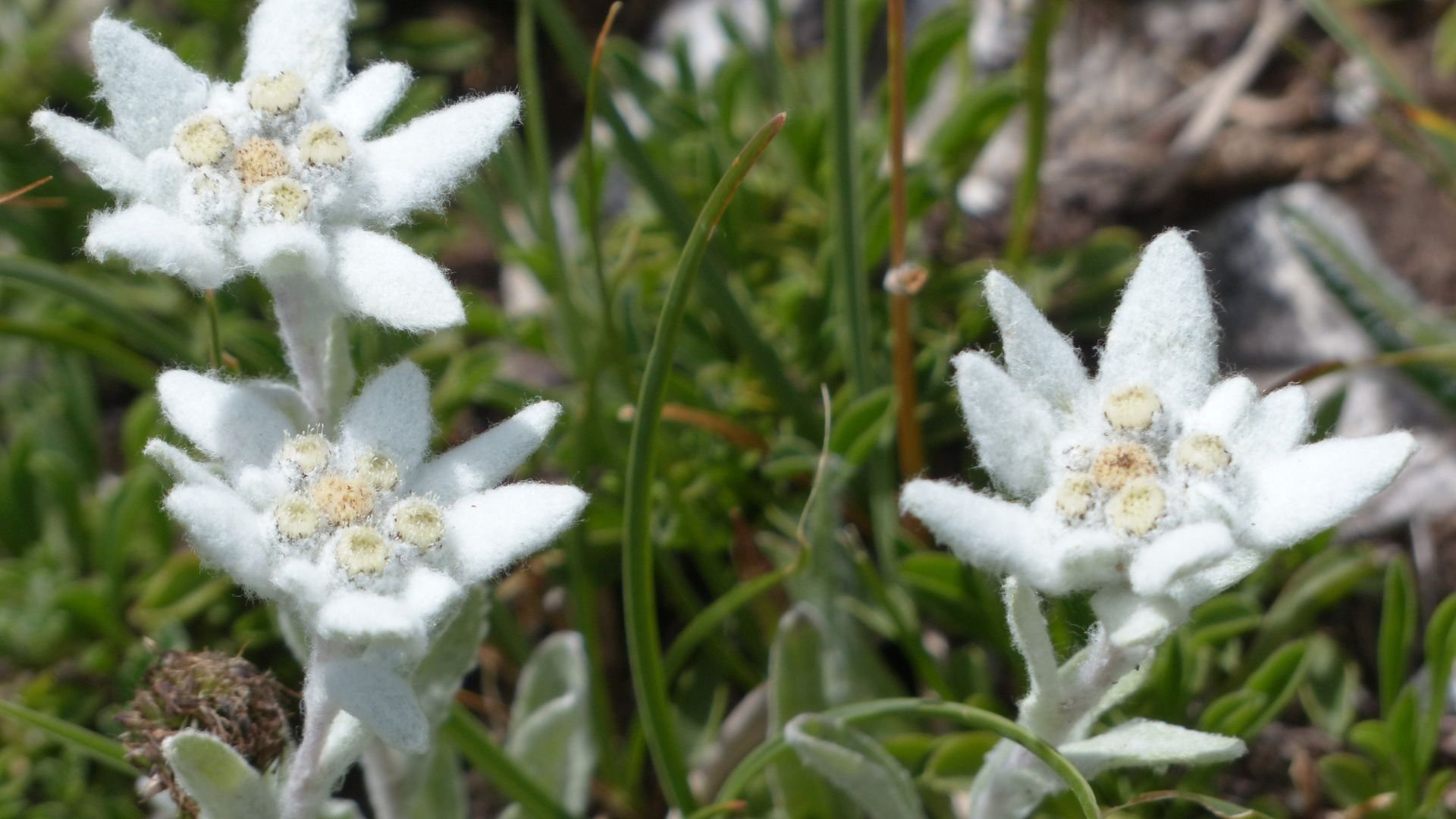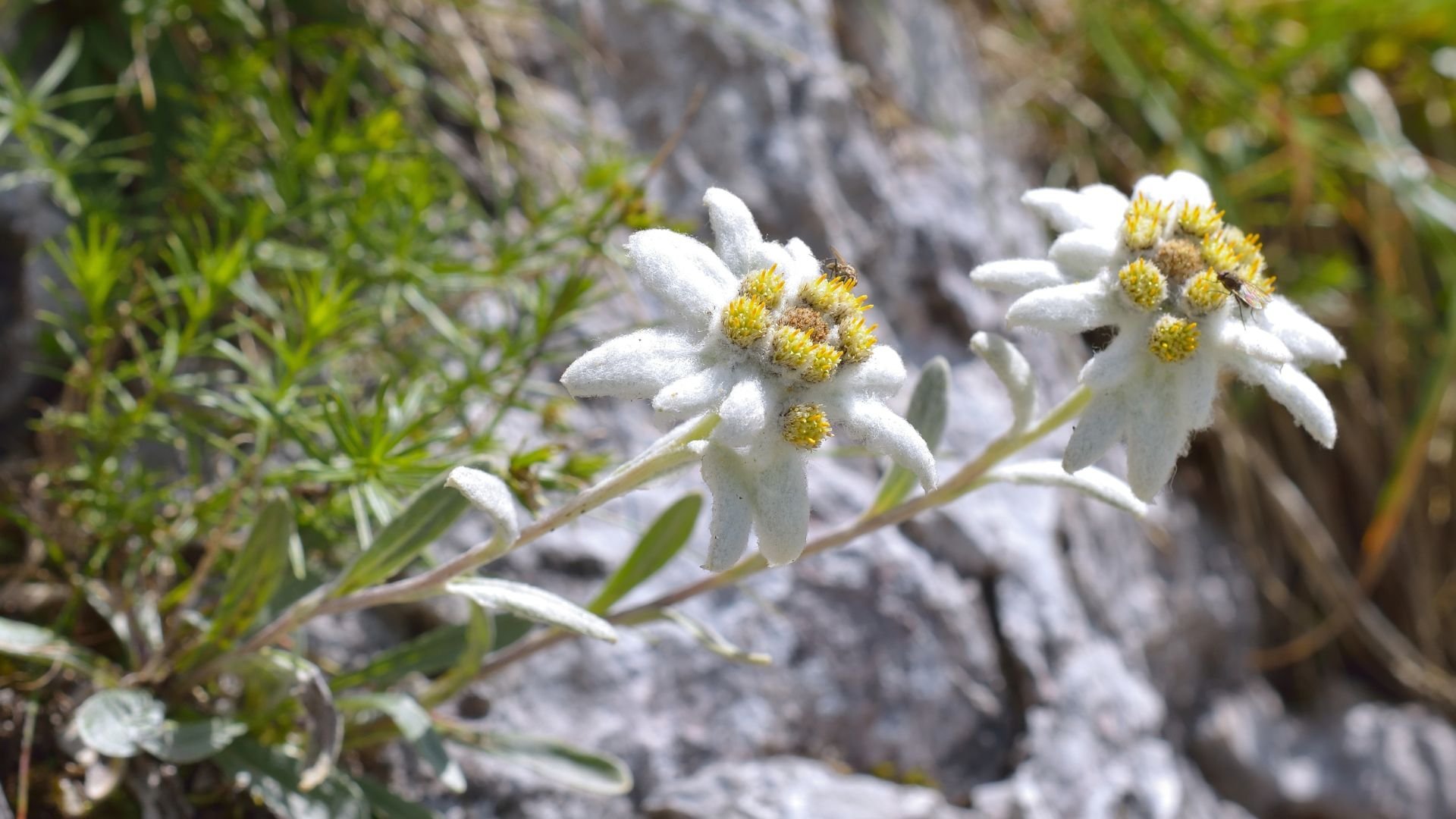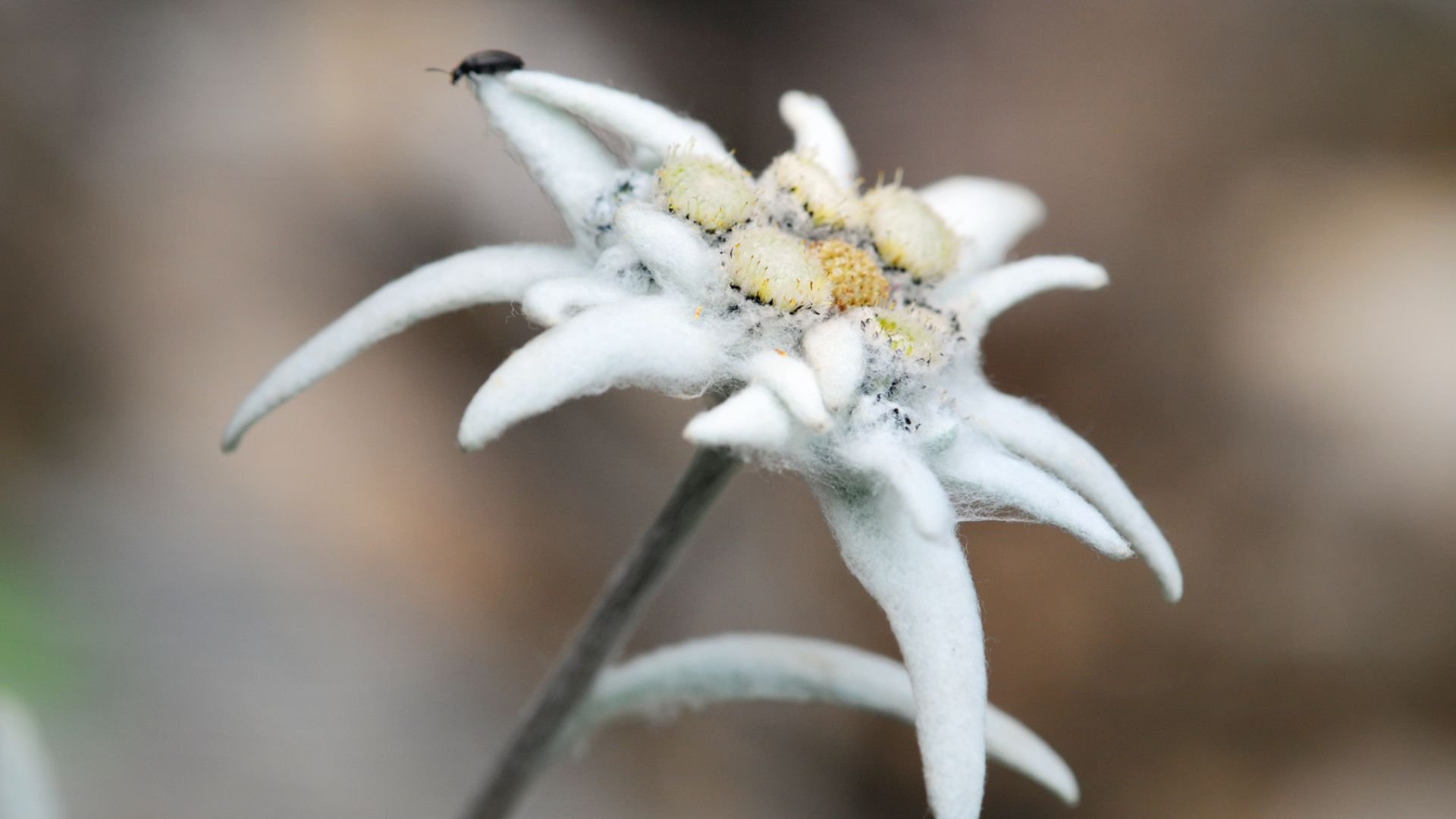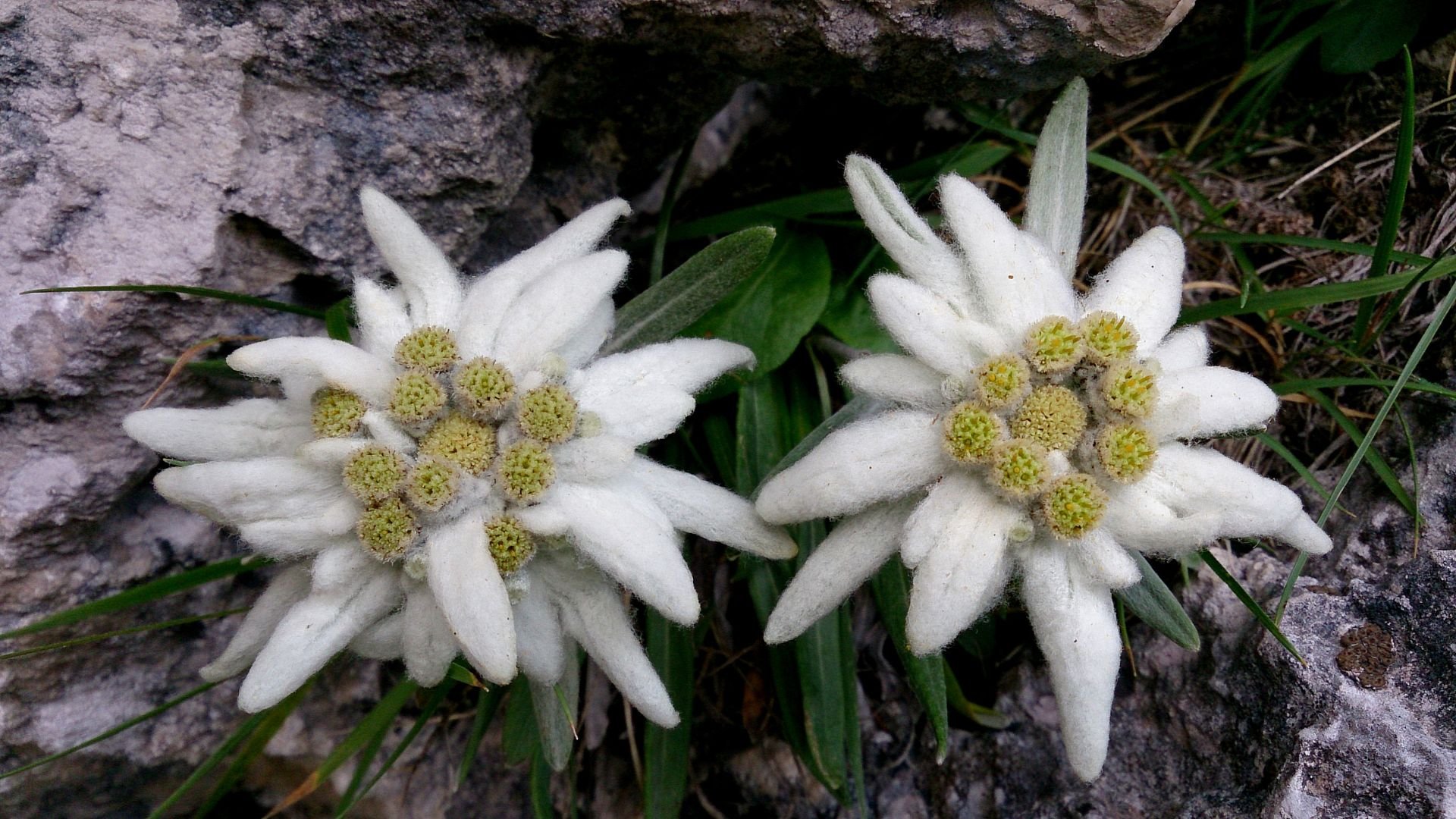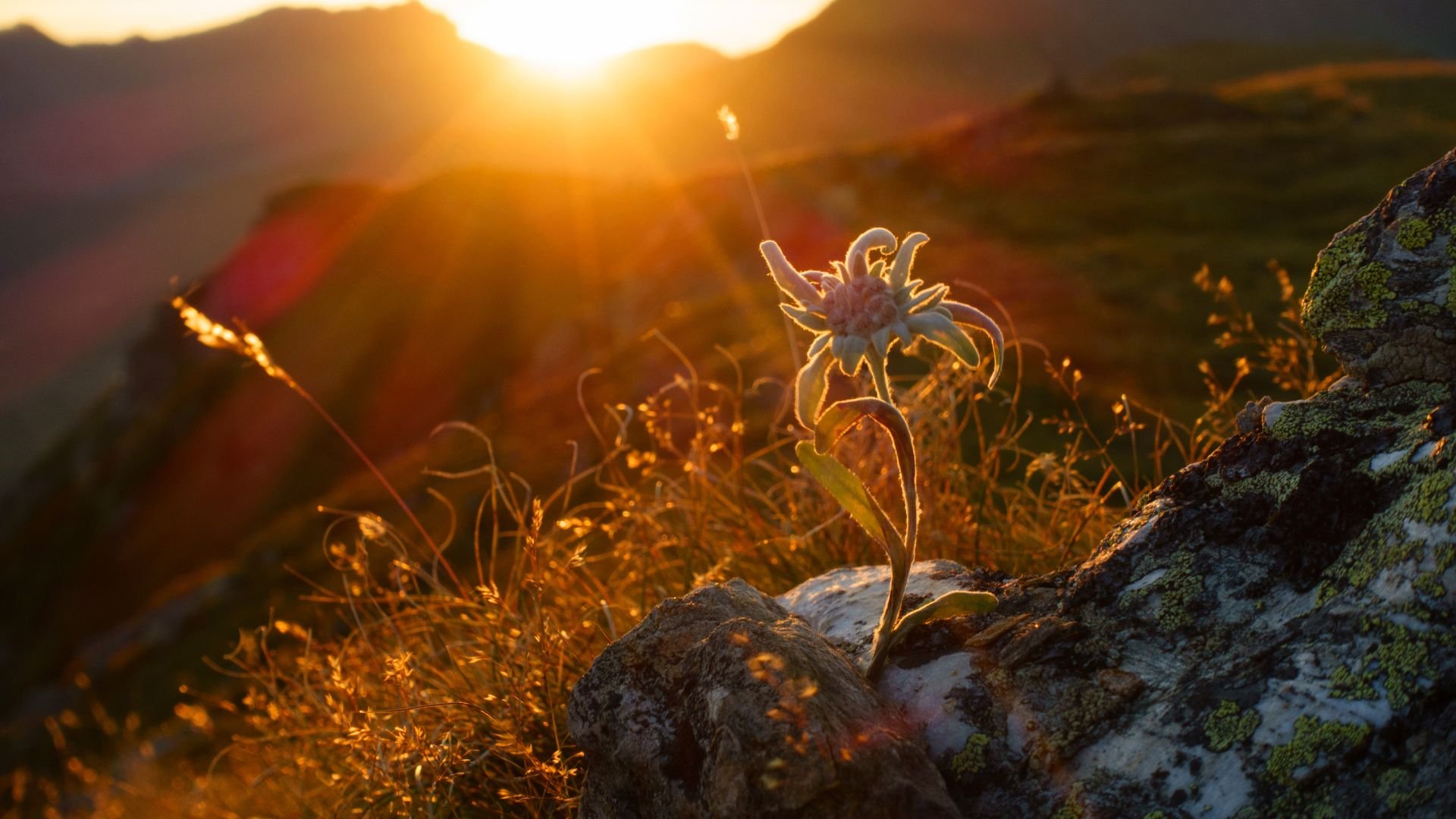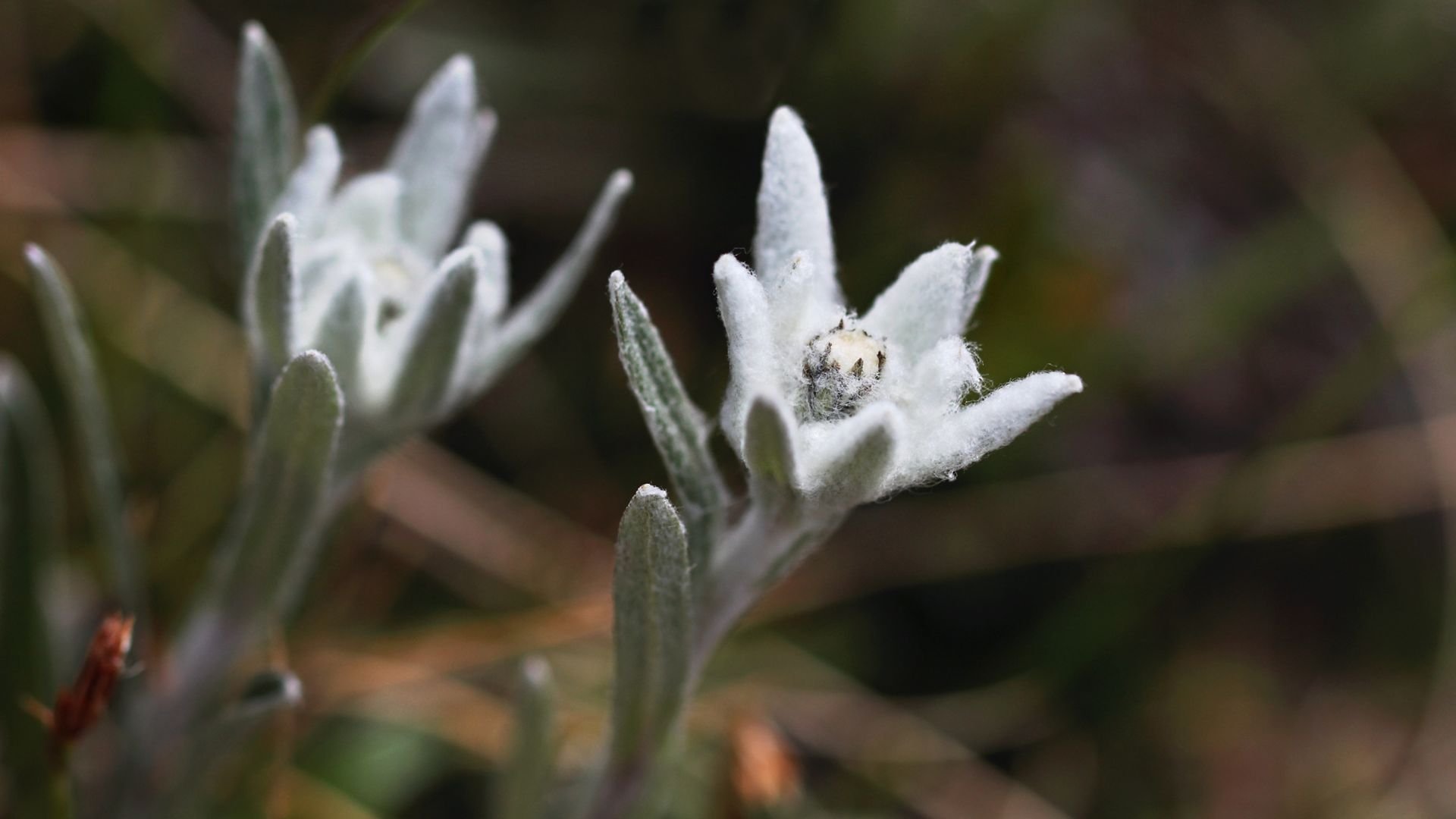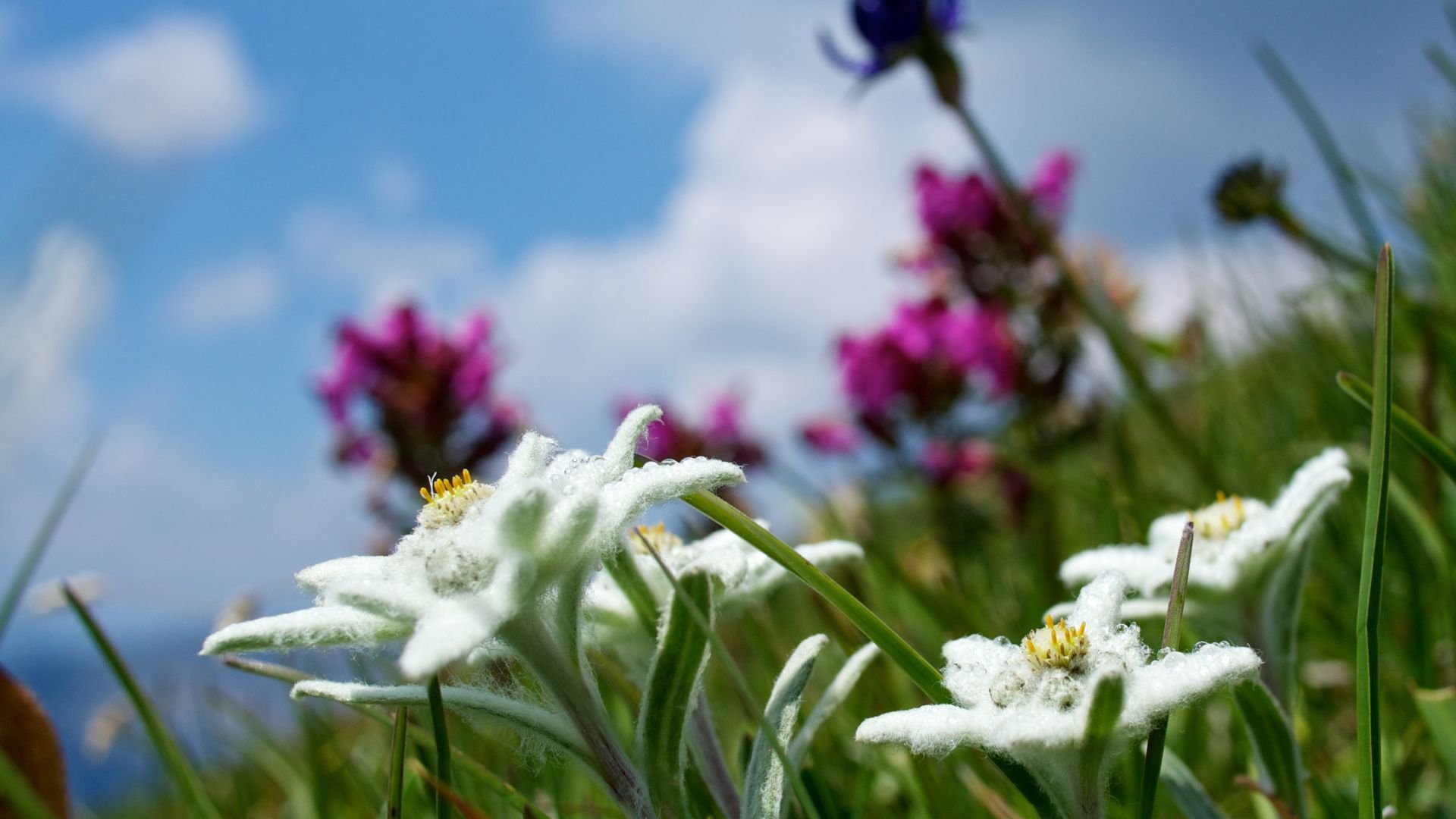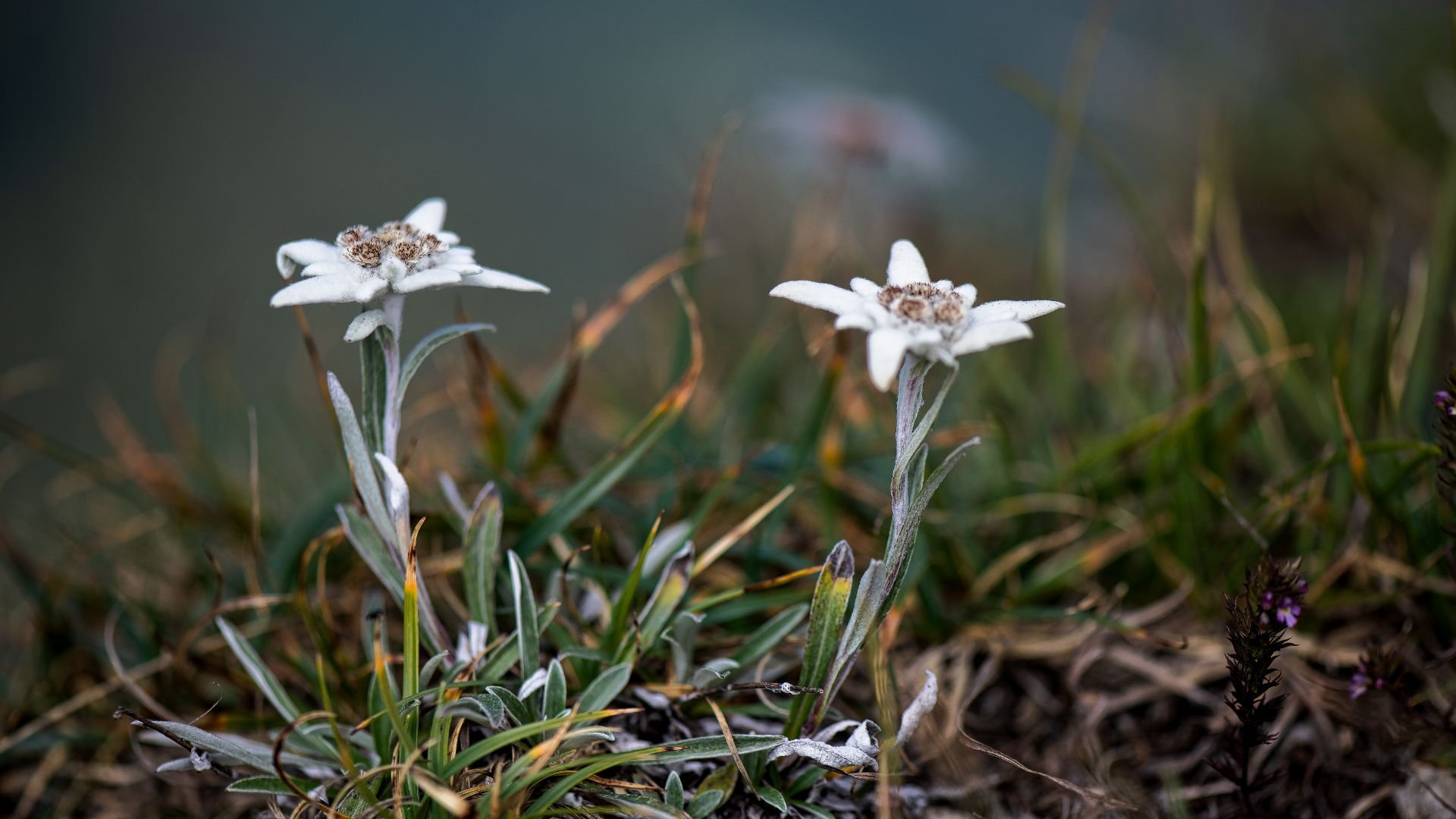The extract of the alpine mountain flower Edelweiss (Leontopodium alpinum), which is part of the sunflower family, has been found to have incredible age-mitigating antioxidant power and it has attracted much interest from today's skincare industry. For this reason and many others, edelweiss essential oil is known as an anti-aging and regenerating oil, supporting skin’s elasticity.
Edelweiss essential oil can be found in Ageless La Cure Perfection Cream which works to reduce and eliminate brown spots associated with aging or sun damaged skin as well as inhibit melanin production that causes new spots to form.
Partake of the mystique of quantum energetic formulated plant-based skincare for your exalted natural bxeauty and well-being. Subscribe for a discount promo code, plus get truly unique holistic beauty tips and offers.
PHYTO5 has also formulated Face Gel with edelweiss essential oil as unique ingredient. And edelweiss extract is a unique ingredient in Face Gel Mask.
Edelweiss is known to strengthen skin’s natural barrier against the penetration of pollutants and it also supports epidermal water management protecting skin against trans-epidermal water loss.
Active compounds in Leontopodium not only help prevent or slow the signs of premature aging in the skin, they calm irritation and protect the integrity of blood vessels to impede the appearance of fine thread veins under the skin.
Edelweiss is one of nature’s most potent protectors against the harmful effects of too much sunlight since it has had to protect itself from intense mountaintop sunlight. The carotenoid and vitamin E content of edelweiss is part of what offers this protection, however there is far more to it than these as you will read throughout this article.
The benefits to skin which edelweiss offers are scientifically proven:
“The clinical test in vivo demonstrated that constant application of LACCE [(Leontopodium Alpinum callus culture extract] on the face and skin tissues improved anti-periorbital wrinkles, skin elasticity, dermal density, and skin thickness compared with the placebo.”
The Physical Construct
Edelweiss has woolly white bracts(1) around its small flowers and downy gray-green leaves. The woolly bracteal leaves, acute and arranged in a star formation, serve to attract pollinating insects. The bright white color of the woolly petals is the result of thousands of microscopic air bubbles that reflect the light issuing an invitation for insects to pollinate.
The white fuzziness of the bloom also creates protection against evaporation, ultraviolet radiation and the harsh cold. In addition, the snow itself that falls at such high altitudes in the Alps also serves as a protective coat for the plant.
Edelweiss naturally grows in limey soils in broken and crumbly rock meadows from altitudes of between 3,300 to close to 11,500 feet. Edelweiss is in danger of becoming extinct in Europe's mountain habitats because of excessive collection and is now a protected species whose gathering is controlled but mostly forbidden. For the last twenty years, alpine edelweiss has been carefully and organically cultivated to compensate for this loss. Still cultivated in the Alps away from the busyness of human life, edelweiss plants are allowed to benefit from their unique Alpine environment free of pollution while they enjoy high soil terroir(2) and pure Swiss water irrigation.
The Leontopodium flowers bloom in the Alps between July and September. They are often cultivated and sold in pots for home and garden enjoyment however since they are cultivated differently at low altitudes for this purpose, they are usually taller, have little of their trademark woolliness and are not their natural beautiful white but are instead a greenish color. This is because the plant has no longer had to exert itself to survive in harsh conditions. It has no need to generate woolliness or its bright white color as alpine cultivated Leontopodium does for the myriad of reasons mentioned in this article.
We discuss this concept at length in our blog, Nutrigenomics and Xenohormesis: Two Recently Coined Scientific Terms Whose Understanding Is Vital to Our Quality Longevity. In it we discuss the same concept that applies to the properties that edelweiss essential oil can pass on to you through your skin:
“A biological principle exists that explains how it is that we can derive health benefits from eons of plant stress response evolution: Environmentally stressed plants, through the ages, have produced bioactive compounds that can confer stress resistance and survival benefits to humans and animals that consume them…”
Against all odds, Edelweiss, which grows at great heights on cliffsides and in other dangerous areas, offers the benefits of centuries of stress response, namely, survival and regeneration to the skin in PHYTO5’s Face Gel Mask and Perfection Cream for hyperpigmentation.”
Uniquely, edelweiss produces its own antioxidants called leontopodic acids. In addition to their customary free radical fighting function, these acids exhibit a strong ability to protect collagen and hyaluronic acid in the skin. They limit the degradation of vital macromolecules found in skin.
Often called the cloud flower, the name edelweiss is a mid-nineteenth century term from the German edel meaning noble and weiss meaning white.
The botanical name Leontopodium alpinum comes from the Greek leontos, the genitive of leon meaning lion and podion, a diminutive of pous meaning foot. We can translate the botanical name then as small lion’s foot which refers to the shape of the flower which might remind us of a lion’s paw. The specific epithet alpinum derived from latin quite obviously means from the Alps.
As the pictures in the slideshow above demonstrate, edelweiss has silvery white felt-like blossoms shaped like a star. The dense hairy texture of the bloom appears to protect the plant from cold, arid conditions and ultraviolet radiation. In fact, the ability of edelweiss to protect against ultraviolet radiation occurs, in part, by reflecting it. This ability is the plant’s signature.(3)
Its fleece also prevents dehydration and shields the plant against the cold.
Edelweiss is extremely rich in natural antioxidants that protect the skin from damaging age, sickness and disease-causing free radicals:
Chlorogenic acid present in edelweiss cleanses as well as removes potentially damaging oxidizing agents. Chlorogenic acid is a natural compound that works in the body to help reduce the risk of diseases such as diabetes and cancer, and it supports the circulatory and nervous systems.
Luteolin, a common flavonoid and antioxidant that exists in many types of plants including fruits, vegetables, and medicinal herbs, has been used in traditional Chinese medicine to treat various diseases such as hypertension, inflammatory disorders, and cancer. Having multiple biological objectives such as helping to reduce inflammation and allergic reactions, luteolin functions biochemically as either an antioxidant or a pro-oxidant as appropriate. It protects the skin from the harmful effects of the sun’s ultraviolet rays.
Edelweiss contains antioxidant derivatives of the bisabolene (aromatic) sesquiterpene (a natural compound constituent of all essential oils). It offers a calming action to the skin. Sesquiterpene molecules deliver oxygen molecules to cells similar to the way hemoglobin does in the blood. Sesquiterpenes naturally delete bad information in cellular memory.
Beta-sisterol, a plant sterol which appears to offer a number of overall health benefits and calms and soothes the skin, reduces the amount of free oxygen radicals in tissues which drive chronic, excessive inflammation and oxidation known to promote aging.
Evidenced pharmacological activities of edelweiss include:
the capacity of extract of edelweiss to inhibit the migration of the cells responsible for inflammation such as leucocytes(4) and mastocytes(5) thus creating potential anti-inflammatory properties;
antimicrobial properties, which have been proved, at least in laboratory, to combat pathogens such as enterococci, staphylococci and streptococci.
Other studies suggest the presence of substances in Leontopodium that might have a beneficial effect on the nervous system, stimulating synapse activity via one of its amino acids, acetylcholine, which acts as a neurotransmitter. This action could lead to potential memory improvement as well as applications for patients with dementia.
History
Historically, edelweiss extract has been used to treat a number of physical conditions such as abdominal disorders, heart conditions, bronchitis, rheumatism, fever and dysentery. It was cooked with butter and honey and used to treat respiratory ills.
Because of the wide array of active compounds found in the plant, edelweiss was and still is used today in traditional medicine of Alpine countries as an astringent, antitussive, anti-rheumatic, and anti-dysenteric. It is mainly utilized in powder form, as an infusion, as an alcohol-based tincture or simply as a preparation when boiled in milk and honey (or butter and honey).
An infusion of the plant was used during Summer in Eastern Europe to help protect skin from the sun. Many women washed theirs faces with the infusion for a healthy glow since the flower improved microcirculation in skin.
Because of its unique appearance, its typically high mountain habitat and its rarity, edelweiss has become the symbol of alpinism and mountains since around the year 800. It’s a symbol of the development of Alpine tourism and exploration. In two Alpine countries, Switzerland and Austria, edelweiss is practically the national symbol.
Many European clubs, associations and military troops have inserted the flower into their emblems. Its use in coats of arms and armorial bearings signify daring nobility, purity and immortality.
The name Edelweiss has been given to a plethora of restaurants, hotels and other tourist attractions not just in the Alpine region but all over the world.
Edelweiss is considered a symbol of boldness and courage and the conquest of great challenges. Greedy flower collectors have snatched edelweiss for use not just because of its symbolic value but because they have found that Leontopodium conserve their characteristics even if dried.
In Hanokotoba (the Japanese form of the language of flowers or floriography and a means of cryptological communication through the use or arrangement of flowers), the flower symbolizes courage and power.
In folklore, edelweiss is believed to provide powers of invisibility and bullet-proof protection. If you’ve seen the classic movie, The Sound of Music, you’ll remember how the Von Trapp family quietly sang the patriotic song, Edelweiss, during one of the final scenes of the film and were protected from the Nazis as if invisible.
Leontopodium was also used for preparing love potions and was believed to gladden one’s heart and fill it with joy. People felt it had magical powers helping make dreams come true.
Conclusion
True Alpine edelweiss, having survived harsh weather and atmospheric conditions of very high altitudes, is well-equipped to help protect the skin from environmental stressors. It is the constant challenge to survive that lends edelweiss essential oil particularly important in shielding skin from environmental stressors and promoting its anti-aging action when it shares its longevity codes with us through the skin.
#####
Endnotes:
A bract or brachial leaf is a modified leaf or scale, typically small, with a flower or flower cluster in its axil. Bracts are sometimes larger and more brightly colored than the true flower as in poinsettia or edelweiss.
A terroir is the complete natural environment in which a plant is grown, including factors such as the soil, topography, and climate.
In the plant kingdom, a signature is what deviates or is unique or special about the plant over other plants.
A leucocyte is a colorless cell that circulates in the blood and body fluids and is involved in counteracting foreign substances and disease; a white (blood) cell.
A mastocyte is a mast and resident cell of connective tissue that contains many granules rich in histamine (a compound which is released by cells in response to injury and in allergic and inflammatory reactions, causing contraction of smooth muscle and dilation of capillaries) and heparin (a compound occurring in the liver and other tissues which inhibits blood coagulation); it is a part of the immune and neuroimmune systems. A mast cell in connective tissue releases histamine and other substances during inflammatory and allergic reactions.
Sources:
Cho WK, Kim HI, Kim SY, Seo HH, Song J, Kim J, Shin DS, Jo Y, Choi H, Lee JH, Moh SH. Anti-Aging Effects of Leontopodium alpinum (Edelweiss) Callus Culture Extract Through Transcriptome Profiling. Genes (Basel). 2020 Feb 21;11(2):230. doi: 10.3390/genes11020230. PMID: 32098197; PMCID: PMC7074254.
Gabriel, Julie. The Green Beauty Guide. United States, Health Communications, 2008.
Morgan, Ned. In the Mountains: The Health and Wellbeing Benefits of Spending Time at Altitude. United Kingdom, Octopus, 2019.
Gregg, Susan. The Complete Illustrated Encyclopedia of Magical Plants, Revised: A Practical Guide to Creating Healing, Protection, and Prosperity Using Plants, Herbs, and Flowers. United Kingdom, Fair Winds Press, 2013.
Vadhera, Shalini. Passport to Beauty: Secrets and Tips from Around the World for Becoming a Global Goddess. United States, St. Martin's Publishing Group, 2006.
Graves, Julia. The Language of Plants: A Guide to the Doctrine of Signatures. United States, Lindisfarne Books, 2012.
Handbook of Formulating Dermal Applications: A Definitive Practical Guide. Germany, Wiley, 2016.
Mazza, Giuseppe. “Leontopodium Nivale.” Monaco Nature Encyclopedia, 6 Oct. 2019, https://www.monaconatureencyclopedia.com/leontopodium-nivale/?lang=en.

